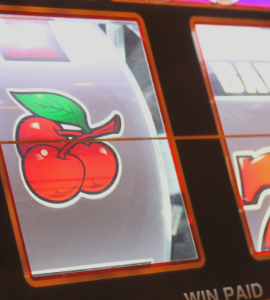
Eight million daily uniques. Thirty-five languages. $100,000 a day in revenue. Is it time to stop comparing Fancy to Pinterest yet?
When Fancy first came on the scene in early 2012, the image-sharing community looked a lot like a certain social-media site we’d seen before. Users could pin—er, “Fancy”—items to digital image boards and then click to purchase. It was called “Pinterest for shopping.” Awed by items’ exorbitant prices, I called it “Pinterest for the 1%.”
Fancy differs from competitors on one singular concept—why should shoppers have to go somewhere else to buy the things they covet? If you can Fancy an item, you can buy it immediately, no matter where it originates. It’s a one-click shopping experience that is seamless on mobile and the Web, in the US and internationally.
Or in other words, while Pinterest users might pin this cotton candy cupcake photo with an intent to bake it at home, Fancy users might Fancy this cotton candy machine with the intent to buy it, right away if desired.
“We operate the most chaotic shop that’s ever existed,” said Joseph Einhorn, CEO of Fancy. “This morning, I have no idea what’s going to be for sale tonight. But eight million people will Fancy a bunch of stuff and figure out what’s going to be for sale. By tonight we’ll be selling in 35 languages, shipping it all around the world.”
After a year of quietly building up his business, Einhorn is opening up to the media again. But he’s no longer interested in talking about Fancy in contrast to its spotlit competitor, Pinterest.
“The use case of a social network is absolutely critical. On Pinterest, people are cataloguing interests into inspiration boards. I totally get it, that is a killer use case. Meanwhile, our use case is a stream of really cool things, laser focused into a shopping utility. I don’t know what other companies plans to do in the future, but nobody yet has done a really great job of switching their use case in midair.”
It makes sense that Einhorn would want to speculate on Pinterest’s future. Pinterest was most recently valued at $2.5 billion, but doesn’t earn revenue yet. If people are going to compare Pinterest to Fancy, it’s Pinterest that would have to change.
Fancy has touched on a lucrative model and already other companies are starting to follow suit. Fab.com, for one, recently dumped its flash sales model for a follower model that looks suspiciously like the one Fancy uses. Ever since Pinterest pinned down Asian e-commerce giant Rakuten as a major investor, the whole world has been watching to see if Pinterest will alter its use case to something more commercial.
Pinning Down Pinterest’s Plans
Pinterest lead developer Jon Jenkins has clear ideas about his network’s plans for monetization: Right now, there aren’t any.
“We’re extremely fortunate to be well funded right now,” Jenkins said. “It gives us to time to do this correctly. We don’t feel the pressure to monetize unnaturally.”
It’s no coincidence that Fancy’s image-sharing model looks like Pinterest’s. But that, both companies appear to confirm, is where the similarities end. In other words, Fancy appears to have completely diverged from its better known competitor.
“Driving traffic off-site is a cool viral trick to incentivize third-party Web sites to promote you,” said Einhorn. “But Fancy doesn’t want to drive traffic to other sites. We want you to be able to have an all-in-one holistic shopping experience right here.”
That means avoiding the Groupon model and making it enjoyable for businesses and brands to work with Fancy. “We’re not brand-diluting,” Einhorn says of Fancy’s interest in collaborating with brands, working with them to create a line of mystery “Fancy boxes” that differ depending on the brand that curates each box.
The news, according to Einhorn, is not what Fancy is earning, but the way Fancy is growing. In the near future Fancy’s priority is bringing its seamless shopping experience to as many people outside of the United State as possible.
“People outside the U.S. are so underserved,” he said. “Anywhere there are young people with mobile phones, there’s a demand for one-step shopping. Nobody seems to be able to do that for them, so we’re doing it.”
Image courtesy of Fancy.
















